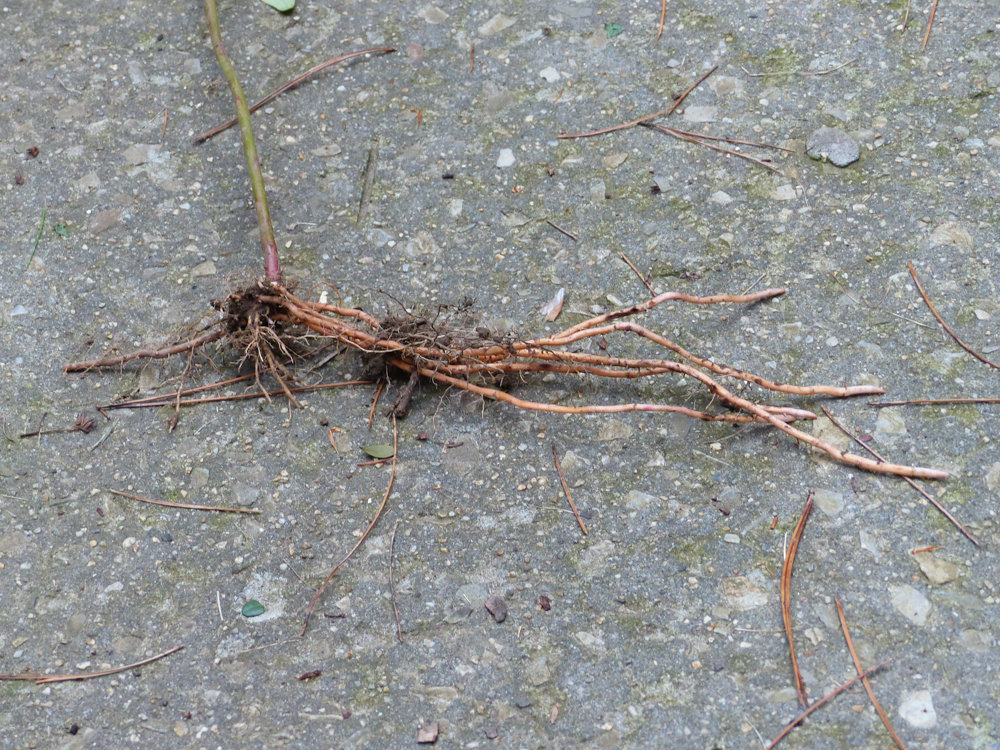It’s a summer of invasives, but these plants can be controlled
I clearly have been working on my garden for many years. The first few were backbreaking as I had to clear away years of neglect, and even dumping.
But I was younger then, it was all so new and exciting.
These were followed by years of tinkering. Do I really like those plants in that spot? Or will they do better and look nicer elsewhere? And, of course, trees and shrubs had to grow in.
Finally, it began to feel properly mature.
So, for a number of years I have been coasting. However, as I looked around this spring, I realized that I had seriously neglected many of my beds, and if I did not get to it soon, it would be close to impossible to reclaim them. Therefore, I put much of my life on hold concentrating on recovering three of my flowerbeds.
But why would three beds consume the entire summer? This goes back to my reliance on plants that will naturalize well, and once planted, simply require “tincture of time” to give a nice display.
This method, unfortunately, is a double-edged sword.
My first brush with a flower that would overwhelm me, the Star of Bethlehem (Ornithogalum umbellatum) was inherited when we bought our house. Local garden designer Judith Mills Johnson saw several of them growing in the spring, and suggested that I try to keep them from spreading by digging up the flowering plants and trying to sift out any bulbs remaining in the soil.
But I naively liked the five-petalled pure white flower growing out of a green and white striped sepal (a protective outer layer surrounding the flower) and ignored the advice. I even refused to mow areas when the flowers had died, just leaving the leaves.
Big mistake! After the flowers die back, the leaves get mushy and can smother other plants.
Now, I assiduously fork them out during flowering and dispose of any of the light greenish bulbs I find later in the season while digging in those beds.
Native to the Mediterranean basin, the Ornithogalum is a member of the Asparagaceae family. The common name references the star-shaped flower bringing to mind the nativity story from the Gospel of Matthew. The genus name Ornithogalum is from the Greek ornis meaning “bird” and gala meaning “milk,” referencing the sparkling white color of the flower. Umbellatum informs us that the flowers grow in an umbel, meaning the flower stalks grow from a common point (instead of on individual stems).
The second plant on my hit list I was also warned against, but here I actually planted it against advice. An acquaintance was clearing a bed and throwing out the plants Lysimachia clethroides — commonly known as gooseneck loosestrife. At that time in my gardening career, throwing out plants seemed like sacrilege, and I requested some. She warned me that it was invasive, but the plant seemed sturdy, about two feet tall and had a long gracefully bending raceme of white flowers resembling a goose’s neck.
(A “raceme” is a grouping of flowers growing off the plant’s main axis on lateral stalks.)
The flowers bloom progressively beginning at the lowest part of the raceme and finally ending at the tip.
The name Lysimachia derives from the Macedonian follower of Alexander the Great, Lysimachus, who was rewarded for his loyalty with the Kingdom of Thrace, an area northeast of Macedonia along the coast of the Black Sea. Clethroides means resembling the genus Clethra from the Greek kletra, meaning “alder,” although these two plants are not closely related.
The Lysimachia did its expected job. It spread mightily, including areas that were problematic. But like the Ornithogalum, it did not stop. Unlike the Ornithogalum, it starts growing in the spring and continues spreading the entire growing season.
Some naturalized plants can be easily uprooted, but when I started working my way through the Lysimachia, it became quickly evident that it was going to be an uphill battle. These roots are thick, tough and heavily clumped in the soil under the stem.
However, the reason it spread so happily is that it sent out multiple runners. Even after I thought I had cleared thoroughly the beds, I discovered large numbers of roots at the depth of four inches.
As gardeners are well aware, everything depends on local growing conditions. I rue having the Lysimachia clethroides, but this native of China and Japan has won the Royal Horticultural Society’s Award of Garden Merit, based on its performance under British growing conditions. Clearly, it must be better controlled in that environment.
More to come!
Have a thought or comment for Sura Jeselsohn? Email her at greenscenesura@gmail.com.






